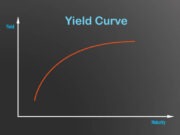
As a business owner, there may come a time when you decide to sell your business. However, before selling your business, it is important to determine what type of buyer you want to sell it to. The two most common types of buyers are strategic buyers and financial buyers.
Both types of buyers have their own benefits and drawbacks, and it is crucial to understand the key differences between them to make an informed decision. In this blog post, we will define strategic buyers and financial buyers, compare their advantages and disadvantages, and help you decide which type of buyer is best suited for your business.
Definition of Strategic Buyers:
Strategic buyers are companies that are already involved in a similar line of business or industry, and they are looking to expand their operations and grow their business through acquisitions.
They typically have a long-term interest in the business and are willing to pay a higher price than financial buyers because they are looking for synergies and strategic benefits that can be achieved by integrating the acquired business with their existing operations. Strategic buyers may also have access to financing that is not available to financial buyers.
Advantages of Strategic Buyers:
The main advantage of a strategic buyer is that they can offer a higher price for your business compared to financial buyers because they are looking to gain a competitive advantage through the acquisition.
There may also be opportunities for economies of scale, cost savings, or product diversification. The acquiring company may be interested in acquiring your business’s intellectual property, patents, or technology. Additionally, a strategic buyer may provide your business with access to new markets, customers, and distribution channels, which can lead to increased revenues and growth.
Disadvantages of Strategic Buyers:
One disadvantage of a strategic buyer is that they may be less likely to retain existing employees if they already have employees who perform similar functions. They may also have different strategies, cultures, and managerial styles, which could lead to conflicts or integration challenges. Furthermore, strategic buyers may have higher due diligence requirements, which could lengthen the sale process and cause delays.
Definition of Financial Buyers:
Financial buyers are investors who are solely interested in the financial returns on their investment. They do not have a strategic interest in the business, nor do they intend to operate the business after the acquisition. Financial buyers may include private equity firms, venture capital firms, and hedge funds.
Advantages of Financial Buyers:
The primary advantage of a financial buyer is that they are typically more flexible in terms of deal structure and financing options. They may be able to complete the acquisition more quickly and with less due diligence than strategic buyers. Furthermore, financial buyers may be willing to invest in businesses that are not currently profitable or in industries that are out of favor.
Disadvantages of Financial Buyers:
The main disadvantage of financial buyers is that they generally pay a lower price for the business compared to strategic buyers because they are only interested in the financial returns. Financial buyers may also have a shorter-term investment horizon and may seek to exit the investment within a few years, whereas strategic buyers may have a longer-term outlook and may be willing to hold on to the business for the long haul.
Conclusion:
In conclusion, there are advantages and disadvantages to both strategic buyers and financial buyers. It is important to carefully consider your options and evaluate which type of buyer is best suited for your business. If you are looking to maximize the sale price, a strategic buyer may be the best option, whereas if you are looking for a quick sale or more flexible deal structures, a financial buyer may be the best option. Ultimately, the decision will depend on your individual circumstances, business objectives, and personal preferences. Whatever you choose, it is essential to work with a qualified advisor to navigate the complex sale process and help you achieve your goals.


































